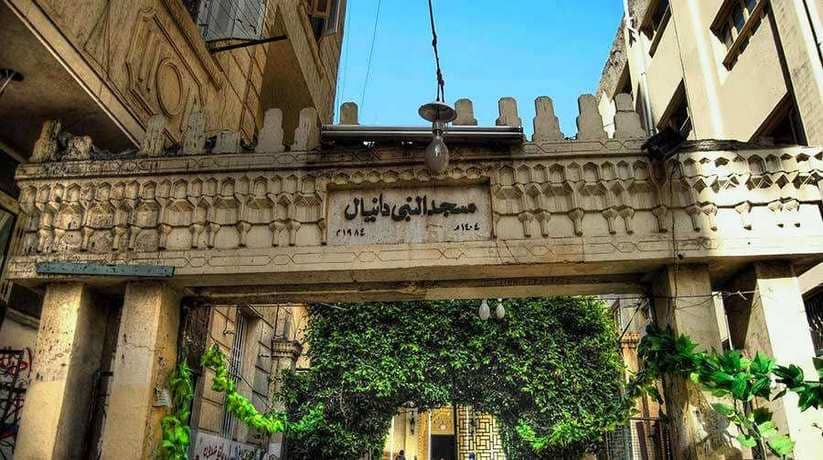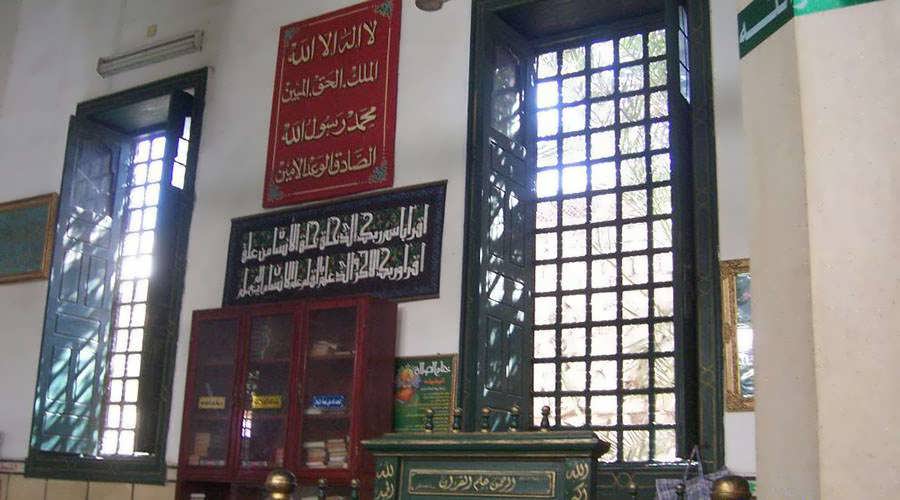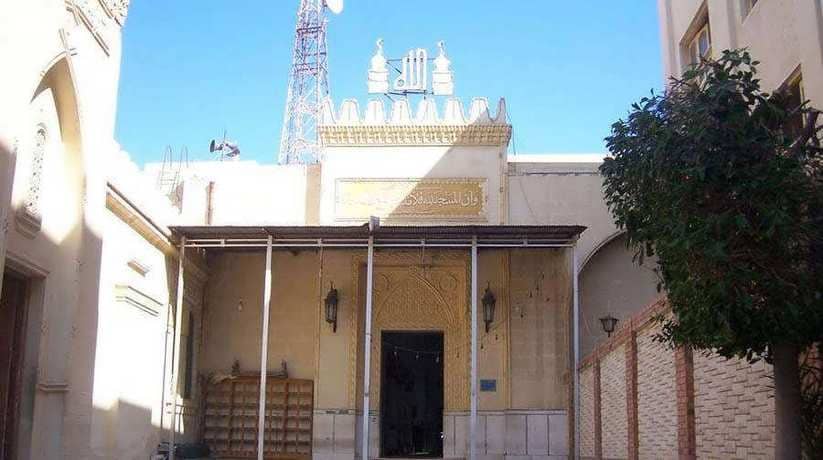Nabi Daniel mosque Alexandria Egypt tours, prices, booking
Nabi Daniel mosque Alexandria Egypt located in Nabi Daniel street in Moharram Bek in Alexandria. In fact, Nabi Daniel is not popular among the Muslims globally. The present Nabi Daniel mosque Alexandria built at the end of the 18th century. It restored in 1823 by Muhammad Ali. A smaller shrine preexisted on the site. It maybe was the mosque of Dzoul Karnein – the Sire with the two horns -. In fact, the mosque contains the remains of the scholar and venerated teacher Prophet Daniel. It also has his companion Sidi Lokman el Hakim, a religious story teller. The Arab legend of the Prophet Daniel appeared during the 9th century.
He told by two astronomers: Mohammad Ibn Kathir el Farghani and Abou Ma’shar. It mentioned that “a young Jew, Daniel persecuted and chased from Syria. It was by the idolaters whom he tried to convert. Moreover, an old man appeared in a dream urging him to go to war. The war was against the infidels and promising victory over all Asia. In fact, Nabi Daniel acquired many followers in Egypt. It is where he sought refuge and built Alexandria. Obeying what the old man ordered him in his dream, he made war against the infidels. After a successful expedition, he returned to Alexandria and died of old age. Furthermore, his body placed in a golden sarcophagus inlaid with precious stones. But the Jews stole it to mint coins and replaced it with a stone sarcophagus”.
Further details about Nabi Daniel mosque Alexandria Egypt:
Vassili Grigorovich Barskij, visited Alexandria in 1727 and 1730. In fact, he was Russian monk. He made a plan of the city. Near the Kom el Dekka mound, he drew a small Mohammedan shrine. It could be the predecessor of the Nabi Daniel mosque Alexandria. We cannot refer to his written description of the city. Barskij’s work only translated and only fragments studied. Moreover, the Danish Captain Norden visited the town in 1737, but tried in vain to find the tomb of Alexander. James Bruce looked for the tomb of the Great Macedonian. It was 30 years later in 1768. He asking the Arabs, the Jews, the Greeks and others, but none were able to show him the location”. At the end of the 18th century, Sestrini shown the sarcophagus in the Attarine mosque.
Moreover, Archimandrite Konstantios tried without success to locate Alexander’s Mausoleum in 1803. He was a Russian prelate from Kiev. He noted that he… ” looked in vain for… the tomb of Alexander the Great. It was the tomb of the man whose life’s course was above the faith of common mortals…;”. He stated that “until the 15th century the location known. But now even the tradition of this tomb has lost…”. He added that “beyond any doubt the remains survived under the great masses of the city’s ruins”. Konstantios, in his writing, and Barskij in his plan do not mention either of the Mosques. A new impulse given to the legend of the tomb of Alexander the Great. It was in the middle of the 19th century.
More details about Nabi Daniel mosque Alexandria Egypt:
Looking through the cracks of the planks he saw a body with the head rose lying in a crystal coffin. On the head, there was a golden diadem. Around scattered papyri, scrolls and books. He tried to remain longer in the vault. But he pulled away by one of the monks of the Mosque. In spite of his repeated attempts to return, he forbidden the area of the crypt. Scilitzis made a written report to the Russian Consul. He also did to the Greek Patriarch of Alexandria. Scilitzis read Dion Cassius and had access to the passage under Nabi Daniel mosque. In fcat, he did not tell the truth. In the humid climate of Alexandria, papyri and books survived for over two millennia.
Mahmoud Bey el Falaki was Egyptian astronomer and engineer. He visited the crypts under the Nabi Daniel mosque Alexandria some ten years after Scilitzis. He tried to carry our the difficult task of drawing a map. The map was of the ancient town. In fact, it ordered in 1865 by the Khedive Ismail. From this paved room inclined corridors started out in four different directions. Because of their length and their bad state I could not survey them. The rich quality of the stones used in the construction. Other indications confirmed a belief. It is that these subterranean passages must have led to the tomb of Alexander the Great. El Falaki was not an archaeologist. So we can be skeptical about his conclusions. But one would not question his sincerity and he must considered as a reliable witness.
Further details about Nabi Daniel mosque Alexandria Egypt:
His description raises some questions. Who decided and why, to force El Falaki to suspend his survey of the subterranean passages? Falaki was working for a project sponsored by the reigning Khedive. Why did he not appeal to his powerful patron? Why did he drop his investigation. There was allegation of a discovery. It made in 1879 by a chief mason and the Sheikh of the Nabi Daniel mosque Alexandria. The story was that while doing masonry work in the basement, they entered the vault. They and reached an inclined subterranean passage. They both walked for some distance and could discern some monuments. Monuments made of granite ending with an angular summit.
In fact, the mason wanted to proceed further but the Sheikh ordered him to return. Moreover, the entrance walled up and the mason asked not to reveal that incident. About 6 meters down, finished with marble and granite, one could find at least two other chambers. They are on the north and on the east side of the Nabi Daniel’s crypt. Sidi Luqman el-Hakeem’s crypt is on the right side of the Nabi Daniel’s crypt. It attached to the marbled wall.
















